- Home
- UFAI in the News
- UFAI in Print
- Born to Run Barefoot?
Born to Run Barefoot?
Bob Baravarian, chief of podiatry at the UCLA Medical Center in Santa Monica, Calif., said he's seen "a fair number" of heel injuries and stress fractures among first-timers who are not used to the different forces of a forefoot strike.
Unshod trend is no panacea in avoiding injuries, foot specialists say
LOS ANGELES -- Swept by the barefoot running craze, ultramarathoner Ryan Carter ditched his sneakers for footwear that mimics the experience of striding unshod.
The first time he tried it two years ago, he ran a third of a mile on grass. Within three weeks of switching over, he was clocking six miles on the road.
During a training run with a friend along a picturesque bike path near downtown Minneapolis, Carter suddenly stopped, unable to take another step. His right foot seared in pain.
"It was as though someone had taken a hammer and hit me with it," he recalled.
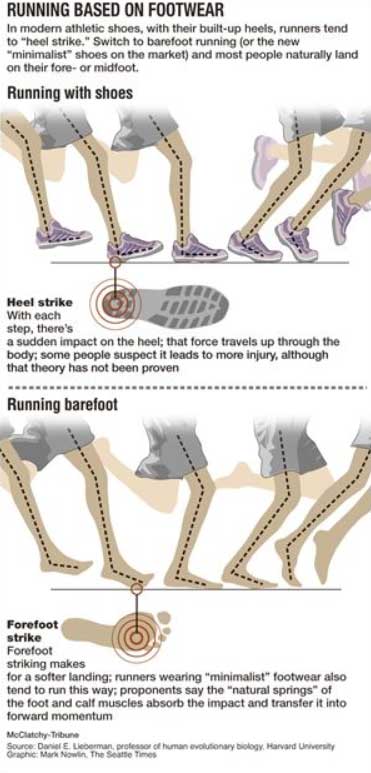
Carter convinced his friend to run on without him. He hobbled home and rested his foot. When the throbbing became unbearable days later, he went to the doctor. The diagnosis: a stress fracture.
As more avid runners and casual athletes experiment with barefoot running, doctors say they are treating injuries ranging from pulled calf muscles to Achilles tendonitis to metatarsal stress fractures, mainly in people who ramped up too fast. In serious cases, they are laid up for several months.
Many converts were inspired by Christopher McDougall's 2009 best-seller "Born To Run," widely credited with sparking the barefoot running trend in the Western world. The book focuses on an Indian tribe in Mexico whose members run long distances without pain in little more than sandals.
While the ranks of people running barefoot or in "barefoot running shoes" have grown in recent years, they still represent the minority of runners. Some devotees swear they are less prone to injuries after kicking off their athletic shoes though there's no evidence that barefoot runners suffer fewer problems.
In some cases, foot specialists are noticing injuries arising from the switch to barefoot, which uses different muscles. Shod runners tend to have a longer stride and land on their heel compared with barefoot runners, who are more likely to have a shorter stride and land on the midfoot or forefoot. Injuries can occur when people transition too fast and put too much pressure on their calf and foot muscles, or don't shorten their stride and end up landing on their heel with no padding.
Podiatrist Paul Langer used to see one or two barefoot running injuries a month at his Twin Cities Orthopedics practice in Minneapolis. Now he treats between three and four a week.
"Most just jumped in a little too enthusiastically," said Langer, an experienced runner and triathlete who trains in his barefoot running shoes part of the week.
Bob Baravarian, chief of podiatry at the UCLA Medical Center in Santa Monica, Calif., said he's seen "a fair number" of heel injuries and stress fractures among first-timers who are not used to the different forces of a forefoot strike.
"All of a sudden, the strain going through your foot is multiplied manifold" and problems occur when people don't ease into it, he said.
Running injuries are quite common. Between 30 to 70 percent of runners suffer from repetitive stress injuries every year and experts can't agree on how to prevent them. Some runners with chronic problems have seized on barefoot running as an antidote, claiming it's more natural. Others have gone so far as to demonize sneakers for their injuries.
Pre-human ancestors have walked and run in bare feet for millions of years often on rough surfaces, yet researchers surprisingly know very little about the science of barefoot running. The modern running shoe with its cushioned heel and stiff sole was not invented until the 1970s. And in parts of Africa and other places today, running barefoot is still a lifestyle.
The surging interest has researchers racing for answers. Does barefoot running result in fewer injuries? What kinds of runners will benefit most from switching over? What types of injuries do transitioning barefoot runners suffer and how to prevent them?
While some runners completely lose the shoes, others opt for minimal coverage. The oxymoron "barefoot running shoes" is like a glove for the feet designed to protect from glass and other hazards on the ground. Superlight minimalist shoes are a cross between barefoot shoes and traditional sneakers -- there's little to no arch support, and they're lower profile.
Greg Farris decided to try barefoot running to ease the pain on the outside of his knee, a problem commonly known as runner's knee. He was initially shoeless -- running minutes at a time and gently building up. After three months, he switched to barefoot running shoes after developing calluses.
Halfway through a 5K run in January, he felt his right foot go numb, but he pushed on and finished the race. He saw a doctor and got a steroid shot, but the pain would not quit. He went to see another doctor, who took an X-ray and told him he had a stress fracture.
Farris was in a foot cast for three months. He recently started running again -- in sneakers.
"I don't think my body is made to do it," he said, referring to barefoot running.
Experts say people can successfully lose the laces. The key is to break in slowly. Start by walking around barefoot. Run no more than a quarter mile to a mile every other day in the first week. Gradually increase the distance. Stop if bones or joints hurt. It can take months to make the change.
"Don't go helter skelter at the beginning," said Dr. Jeffrey Ross, an associate clinical professor of medicine at Baylor College of Medicine and chief of the Diabetic Foot Clinic at Ben Taub General Hospital in Houston.
A year and a half ago, Ross saw a steady stream -- between three and six barefoot runners a week -- with various aches and pain. It has since leveled off to about one a month.
Ross doesn't know why. It's possible that fewer people are trying it or those baring their feet are doing a better job adapting to the new running style.
There's one group foot experts say should avoid barefoot running: People with decreased sensation in their feet, a problem common among diabetics, since they won't be able to know when they get injured.
Harvard evolutionary biologist Daniel Lieberman runs a lab devoted to studying the effects of running form on injury rates. He thinks form matters more than footwear or lack of -- don't overstride, have good posture and land gently.
In a 2010 study examining different running gaits, Lieberman and colleagues found that striking the ground heel first sends a shock up through the body while barefoot runners tend to have a more springy step. Even so, more research is needed into whether barefoot running helps avoid injury.
"The long and the short of it is that we know very little about how to help all runners -- barefoot and shod -- prevent getting injured. Barefoot running is no panacea. Shoes aren't either," said Lieberman, who runs barefoot except during the New England winters.
Carter, the ultramarathoner, blames himself for his injury. Before he shed his shoes, he never had a problem that kept him off his feet for two months.
In April, he ran his fourth 100-mile race -- with shoes. Meanwhile, his pair of barefoot running shoes is collecting dust in the closet.
 Great podiatrist and office staff as well. Loved that they had an appt within the week, took X-rays right in the office before ...Sunny S.
Great podiatrist and office staff as well. Loved that they had an appt within the week, took X-rays right in the office before ...Sunny S. Overall, it was a great experience. I've been coming to Dr. Kellman for about a year and he and his staff are very helpful.Vanessa W.
Overall, it was a great experience. I've been coming to Dr. Kellman for about a year and he and his staff are very helpful.Vanessa W. ExcellentDebasish M.
ExcellentDebasish M. Everyone was friendly and professional.Victor L.
Everyone was friendly and professional.Victor L. Very efficient and an excellent serviceHorwitz J.
Very efficient and an excellent serviceHorwitz J. Dr. Baravarian was extremely professional, helpful, and compassionate. I had moderate to severe pain in both feet with walking ...Justin P.
Dr. Baravarian was extremely professional, helpful, and compassionate. I had moderate to severe pain in both feet with walking ...Justin P. Chaos in the office checkin. We weren’t forewarned about the iPad data collection. That made me late for a following appointmen...Carl C.
Chaos in the office checkin. We weren’t forewarned about the iPad data collection. That made me late for a following appointmen...Carl C. Dr Nalbandian is an exceptional doctor and person. The staff respectfully & compently delt with an issue I had regarding a prev...Karen M.
Dr Nalbandian is an exceptional doctor and person. The staff respectfully & compently delt with an issue I had regarding a prev...Karen M. Visiting the office is a pleasurable occurance.Thomas J.
Visiting the office is a pleasurable occurance.Thomas J. Dr Kelman and his staff are always wonderfully caring and respectful to my father who has Alzheimer's dementia.Erland E.
Dr Kelman and his staff are always wonderfully caring and respectful to my father who has Alzheimer's dementia.Erland E. Thank you for being there for your patients.Dieter B.
Thank you for being there for your patients.Dieter B. Dr Babak Baravarian is excellent! I had a longstanding ankle injury and was in a lot of discomfort with a torn peroneal tendon....Colleen M.
Dr Babak Baravarian is excellent! I had a longstanding ankle injury and was in a lot of discomfort with a torn peroneal tendon....Colleen M.
-
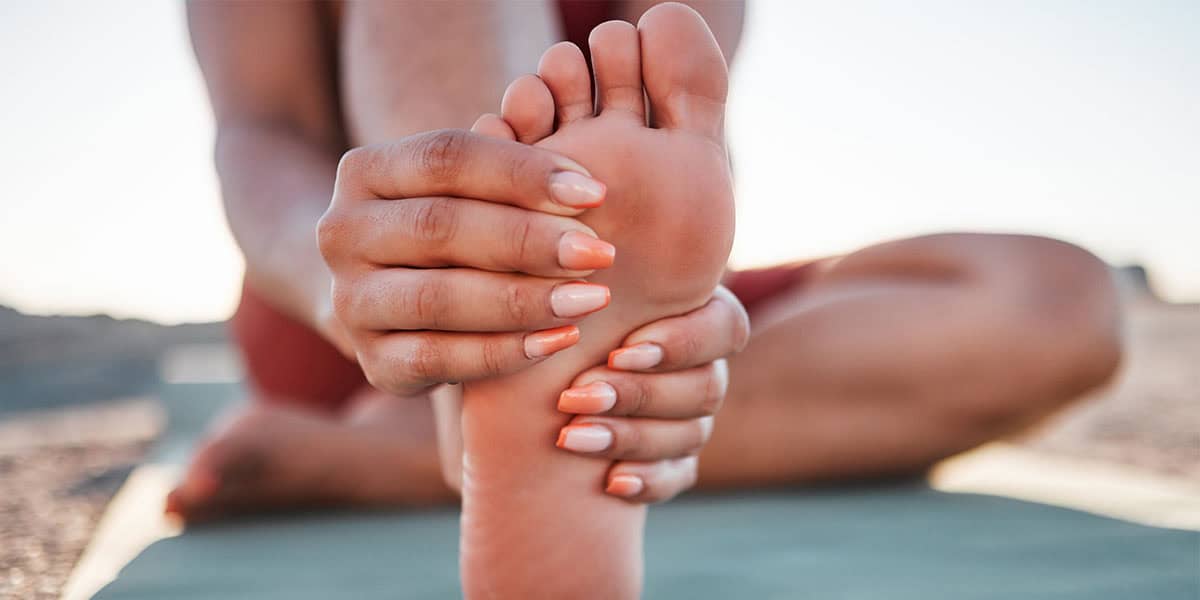 Listen Now
Could Feet Be the Windows to Your Health?
Read More
Listen Now
Could Feet Be the Windows to Your Health?
Read More
-
 Listen Now
How to Choose Running Shoes: 6 Essential Steps
Read More
Listen Now
How to Choose Running Shoes: 6 Essential Steps
Read More
-
 State-of-the-Art CT Scanning, Now in Our Office
Read More
State-of-the-Art CT Scanning, Now in Our Office
Read More
-
 Listen Now
The Link Between Foot Health and Posture
Read More
Listen Now
The Link Between Foot Health and Posture
Read More
-
 Listen Now
15 Summer Foot Care Tips to Put Your Best Feet Forward
Read More
Listen Now
15 Summer Foot Care Tips to Put Your Best Feet Forward
Read More
-
 Listen Now
Revolutionizing Extremity Imaging: UFAI's Open MRI for the Foot and Ankle
Read More
Listen Now
Revolutionizing Extremity Imaging: UFAI's Open MRI for the Foot and Ankle
Read More
-
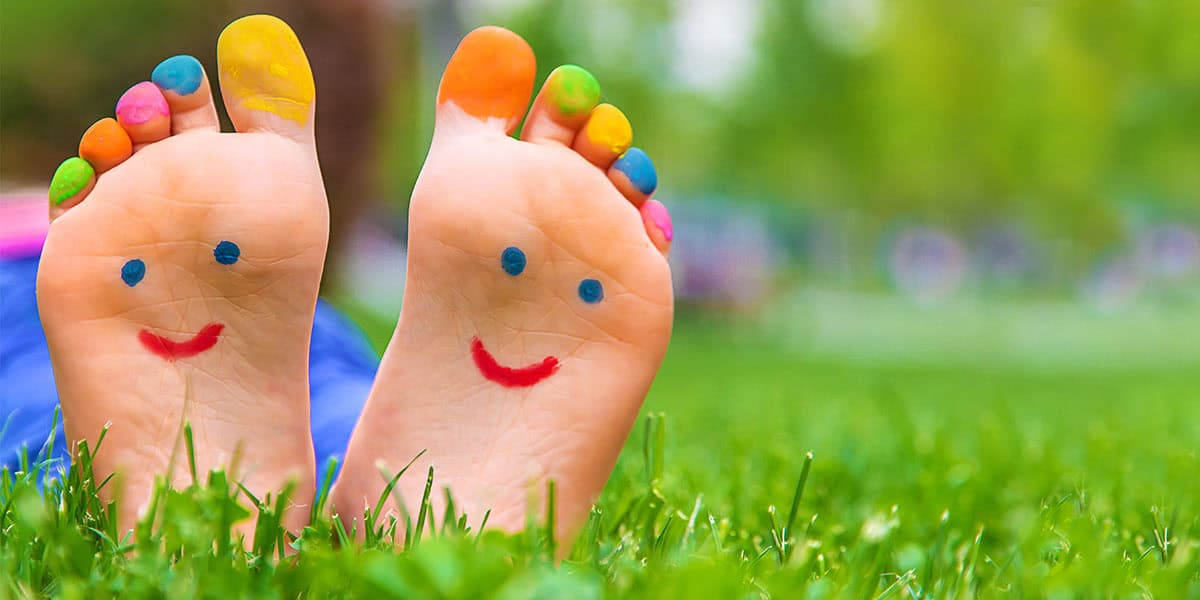 Listen Now
Is Foot Analysis Better than Horoscopes? What Do Your Toes Reveal About Your Personality?
Read More
Listen Now
Is Foot Analysis Better than Horoscopes? What Do Your Toes Reveal About Your Personality?
Read More
-
 Listen Now
Why Are My Feet Different Sizes? It's More Common Than You Think
Read More
Listen Now
Why Are My Feet Different Sizes? It's More Common Than You Think
Read More
-
 Listen Now
Common Foot Problems In Aging Feet: What To Watch Out For
Read More
Listen Now
Common Foot Problems In Aging Feet: What To Watch Out For
Read More
-
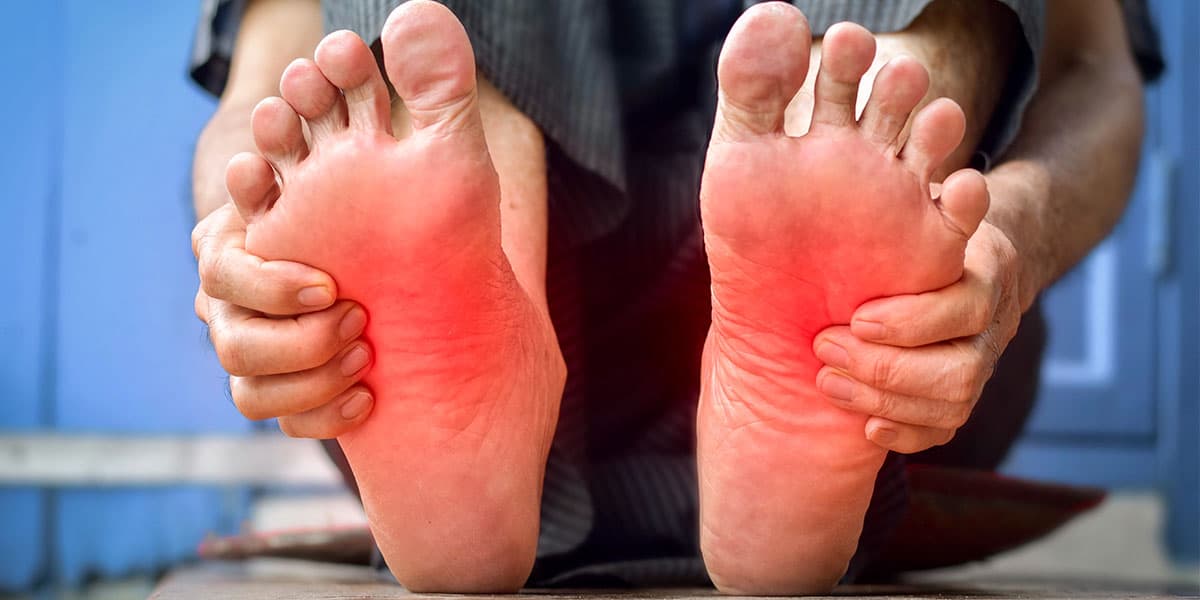 Listen Now
What is erythromelalgia?
Read More
Listen Now
What is erythromelalgia?
Read More
-
 Listen Now
Flip-flops Causing You Pain? Protect Your Feet This Summer!
Read More
Listen Now
Flip-flops Causing You Pain? Protect Your Feet This Summer!
Read More
-
 Listen Now
9 Running Tips from Sports Medicine Experts
Read More
Listen Now
9 Running Tips from Sports Medicine Experts
Read More
-
 Listen Now
Revealing the Secrets of Men's and Women's Shoe Sizes: Why Are They Different?
Read More
Listen Now
Revealing the Secrets of Men's and Women's Shoe Sizes: Why Are They Different?
Read More
-
 Listen Now
Custom Orthotics vs. Over-the-Counter Inserts: Which Are Best for Your Feet?
Read More
Listen Now
Custom Orthotics vs. Over-the-Counter Inserts: Which Are Best for Your Feet?
Read More
-
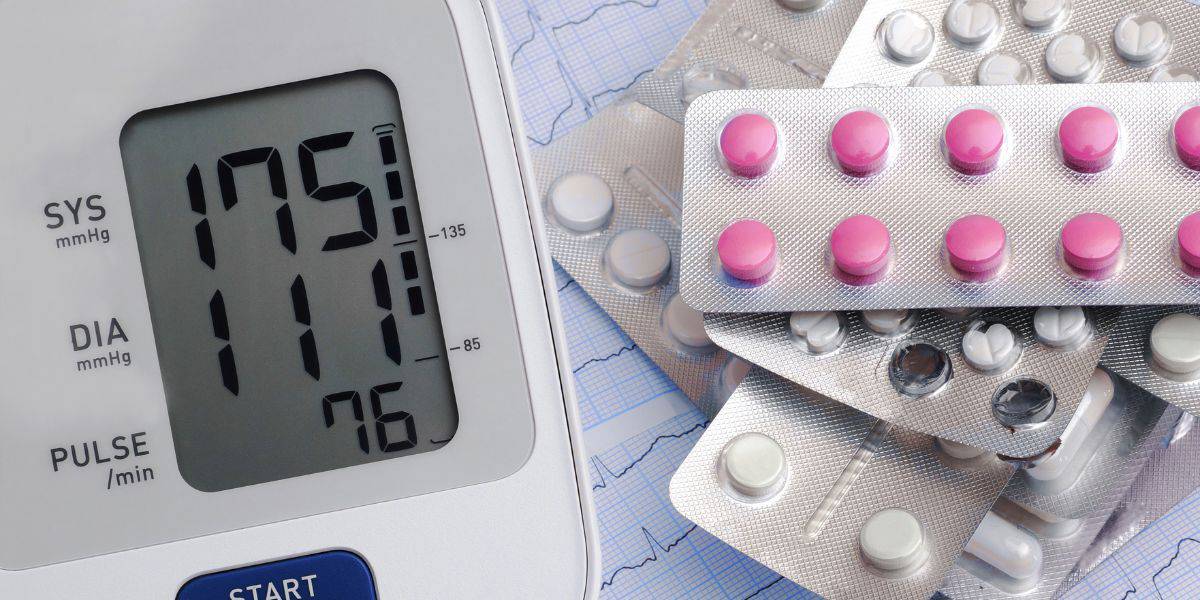 Listen Now
Do blood pressure medicines cause foot pain?
Read More
Listen Now
Do blood pressure medicines cause foot pain?
Read More














